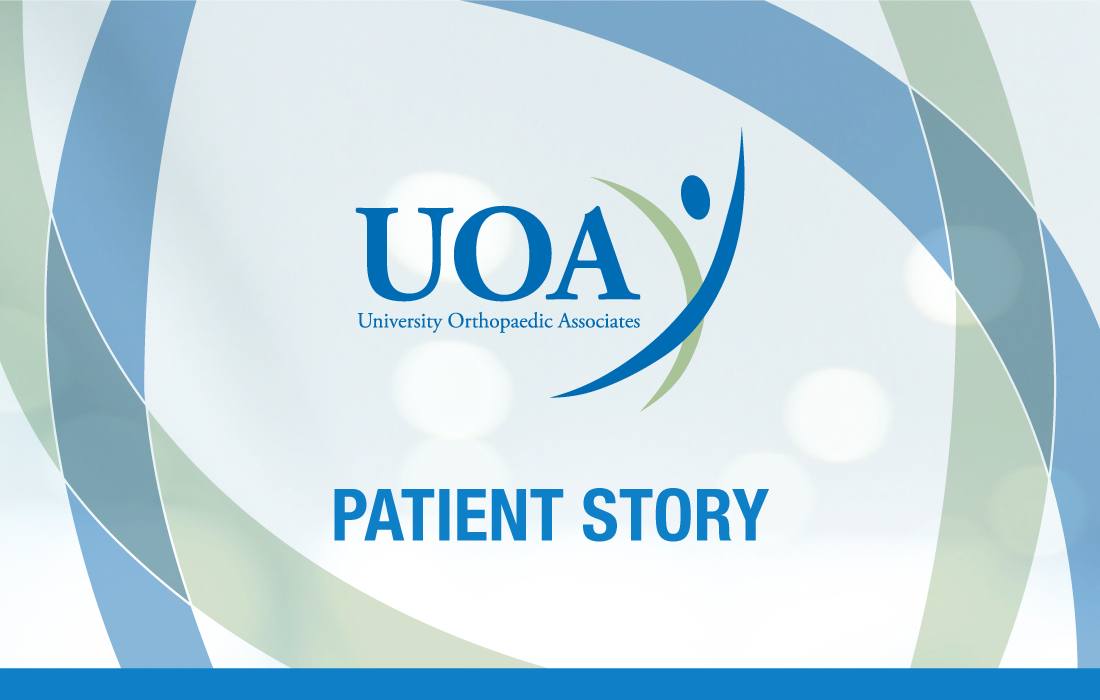Back to Work and Back to the Links

Sometimes, a job is just a job. But other times, there are risks that catch us by surprise.
That was the case for 53-year-old Spotswood, New Jersey resident Bijen Patel, whose career as a restaurant manager led him down a path to physical disability. That’s because one of his restaurant roles entailed lifting boxes and buckets, some as heavy as 50 pounds or more.
And how long did he perform this gym-worthy task? “Over 25 years,” he reports. “Too many years.” His current restaurant stint that began in August 2017 requires a 60-hour week. That all adds up to a lot of lifting.
What’s more, he admits that in hindsight, he also wasn’t lifting with proper technique. “The pain built up over time and age; it all catches up to you,” he says.
Finding a Solution to a Common Problem
The trouble began in early 2018. Slowly and intermittently at first, he began to experience arm pain radiating down to his right hand. He went to his family doctor in January, who gave him a cortisone shot to ease the pain. That worked, until it didn’t. The cortisone wore off and the pain returned.
Patel went back to his doctor in April, who told him that continuing pain could not be solved by more cortisone injections. The doctor told Patel that he should see an orthopedist and recommended University Orthopaedic Associates (UOA).
In July Patel was paired with Dr. Christopher Doumas, a hand and upper extremity specialist at UOA. Relates Patel, “As soon as I told him about the pain, he performed an ultrasound to see if there was damage to the of my right arm.”
Dr. Doumas pointed out a couple of areas of tendon disease evident from the ultrasound, coming from Patel’s elbow. This was confirmation of a condition called lateral epicondylitis, also known as tennis elbow.
Although Patel felt the pain extending into his hand, lateral epicondylitis is the most common cause of elbow pain, which especially affects those age 40 to 60. It is caused by repetitive use of the wrist extensor muscles and tendons.
In addition to tennis and other similar sports or activities, tennis elbow is a common malady among workers such as plumbers or painters and those like Patel who often lift heavy objects.
It was evident to Dr. Doumas from the ultrasound and failure of conservative treatment that a small procedure was the next step. “This is the best course of action that can help you heal, and can prevent further damage to the tendons,” Dr. Doumas told Patel.
Surgery is not a recommendation Dr. Doumas makes lightly. Careful and conservative treatment is the basis of his personal experience and philosophy. But in Patel’s case, the procedure was clearly indicated.
In addition to other methods of tennis elbow treatment, Dr. Doumas is also an expert in Tenex Health TX, a minimally invasive outpatient surgery that precisely targets and removes damaged tissue. This surgery has been shown in a number of clinical studies to decrease pain and improve overall functionality. It is also much less invasive with less risk involved than typical open procedures and is performed under local anesthesia so the patient is awake without any of the risks or ill effects of anesthesia
On November 14th, Patel underwent outpatient surgery. “It was easier than I thought,” he says of Tenex recovery. “I didn’t feel anything other than a little pain on the second night.” He took some Advil that night but no other pain medication.
The Road to Recovery
Patel was instructed to keep his arm in a sling and remained on disability for three weeks. “I missed going to work,” he says, “but I had no choice. I couldn’t do my job since I mostly have to use my right hand.”
He went back to work on December 8, and when he explained to his coworkers that he couldn’t initially lift anything, they all pitched in and helped him.
Patel began light lifting by the middle of January and his recovery continues. Overall, “everything is fine,” he reports.
To minimize the risk of getting a recurrence, Patel gets by with a little help from his friends. “I used to pick up merchandise, load and unload,” says Patel. “Now, my coworkers do it for me. ‘You stay in the restaurant; we’ll do everything else,’ they tell me.”
Of his care from Dr. Doumas he says, “I’m happy. I found the right doctor. Dr. Doumas is a very pleasant person. By my second appointment, I felt like I had known him for a long time.” Of UOA and his treatment he feels that, “everyone was very professional and courteous.”
Longing for His Game
Only one hurdle remains. As he explains, “The bad thing is I can’t golf,” says Patel. He’s enjoyed the sport since 2004 but has missed for the past two years. “It is hard, believe me,” he says.
But with care from Dr. Doumas and UOA, it’s back to the links for Bijen Patel. “I’m definitely getting back to golf,” he promises.

